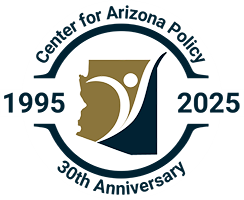The extended public school closures during the COVID-19 outbreak should be more than enough to convince skeptics of the value of educational freedom in Arizona. While public schools have shut down in-person learning, many students in private schools, home schools, and various combinations of other learning environments remain on track. And, although many students adapt to online learning, others struggle, or even fail. That’s why students need options. They have to get back to school, in one way or another.
This pandemic highlights what CAP has always championed: Parents have a fundamental right to direct the education of their children. That requires them to also have all the options available to them so they can choose the educational environment that best suits their child’s needs. Read about the different options on CAP’s Policy Pages.
We end School Choice Week with good news for Arizona families considering their education options. CAP is supporting three educational freedom bills this session, including provisions to help bridge the gap left by COVID-19.
SB 1452 would extend eligibility for the Empowerment Scholarship Account program to include low-income students. Many of these students have been hardest hit by the pandemic because, they were left out when classes moved online. Many don’t have access to the resources needed for online learning – such as a computer or access to the internet.
The ESA program allows parents to withdraw their children from a district or charter school, and receive 90% of state funds allocated for their child for a variety of educational expenses, including therapy, tutors, textbooks, curriculum, tuition at private schools, and even fees for standardized tests. Federal and local funds stay with the school district.
The bill would also change the requirement from 100 to 30 days in a public school before transferring. This is vital since many public school students haven’t been able to attend class much of the past year. Read more in our SB 1452 fact sheet on CAP’s bill tracker. The Senate Education Committee will consider SB 1452 on Tuesday, February 2.
A recent poll shows 70% of Arizonans support ESAs for low-income students.
SB 1273 allows students with an educational scholarship for tuition to pay for expenses in connection with standardized testing for college credit, advanced placement, or career and technical education industry certification assessment. Students can also use their scholarship to pay for school sponsored extracurricular activities. These include band uniforms, equipment or uniforms for varsity athletic activities, scientific laboratory materials, and trips that are solely for competitive events. They would not be allowed to use the grant to cover the cost of senior trips or events that are recreational, amusement, or tourist activities. Read more on our SB1273 fact sheet. The Senate Finance Committee will hear SB 1273 on Wednesday, February 3.
SB 1041 raises the cap on a separate corporate scholarship program solely to benefit students with disabilities and displaced students. Arizona lawmakers approved “Lexie’s Law” in 2009 to help special needs students like Lexie pay for the educational environment that could best meet her unique needs. They capped the amount at $5,000,000. And haven’t increased it since. After 12 years, it is time to raise that cap so more Arizona students with special needs have access to the kind of learning environment that best suits their needs. Read more in our SB 1041 fact sheet. SB 1041 awaits consideration by the full Senate.
Follow the progress of these and all the CAP-supported bills on our bill tracker.
Bad bills of the week:
HB 2147 would repeal the ability of an STO donor to recommend a beneficiary.
HB 2148 would repeal a student’s ability to bring their STO grant with them if they transferred schools.
ICYMI
- The Goldwater Institute has an encouraging story about one Arizona family who found flexibility during the COVID-19 pandemic through an ESA.
- The Center Square reports on Arizona’s recent drop in public school enrollment, and the rise in private school enrollment in light of the pandemic school closures.
Stay connected and consider receiving additional publications by joining the CAP Network.


